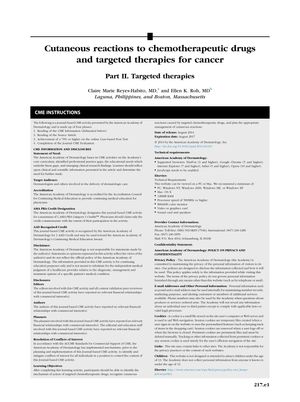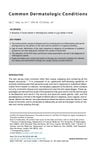Cutaneous Reactions to Chemotherapeutic Drugs and Targeted Therapy for Cancer
July 2014
in “
Journal of the American Academy of Dermatology
”

TLDR Targeted cancer therapies often cause skin reactions, so dermatologists must manage these effects.
Targeted cancer therapies, while often better tolerated than conventional chemotherapy, frequently caused cutaneous reactions due to the presence of target molecules in the skin. Tyrosine kinase inhibitors led to edema and macular rash, while epidermal growth factor receptor inhibitors caused PRIDE syndrome, characterized by papulopustular rash, paronychia, hair changes, itching, and dryness. Vismodegib resulted in muscle spasms and alopecia, bortezomib caused multiple rashes, and sunitinib and sorafenib led to hand-foot skin reactions. New melanoma treatments like ipilimumab induced immune-related dermatitis and pruritus, and BRAF inhibitors increased the risk of squamous cell carcinoma. Dermatologists needed to be aware of these reactions to manage and care for cancer patients effectively.


